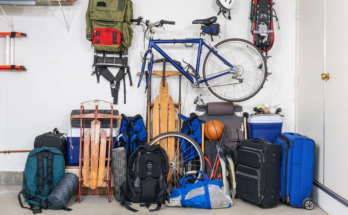
As the pandemic has triggered stories of an ongoing exodus from many major cities (though it’s important not to read too much into those headlines), homes are increasingly sold sight-unseen. According to Yahoo Finance, one out of 20 homes is now sold to homebuyers remotely. If you’re looking to take advantage of the low interest rates heating up the market, you too might be considering remote buying. Here’s what you need to know to make it work for you.
What is virtual home buying?
In most cases wearing a mask and social distancing is all that’s needed for home inspection, but the increase in virtual buying can be attributed to people who are highly motivated and don’t want to risk too much travel (especially out of state) as pandemic cases continue to spike.
Of course, nothing beats the traditional in-person inspection to give you a good sense of space, light, noises, or smells of a place—but in the case of virtual buying, your realtor can serve as your proxy. Plus, real estate companies have made strides in offering enhanced options for viewing a home from afar, including 360-degree photos, 3-D mapping, and virtual tours.
“We have had a huge uptick in the amount of clients, many who have purchased straight from the video without seeing the property until they’re in the inspection period, or we’ve narrowed down the properties based on the video,” says RE/MAX realtor Sue Benson in a recent interview with Bankrate .
G/O Media may get a commission
Tips for virtual home buying
Don’t rely too much on photos or videos provided by the seller in making your decision to buy a house. Instead, use those tools to help you narrow down a short list of a few homes, after which you can arrange to have your agent provide a separate, private warts-and-all virtual tour (many sellers who aren’t aren’t allowing for open houses or in-person visits will let agents view the property on a buyer’s behalf.)
When building your shortlist of properties, keep in mind what you’re not being shown. As broker Peggy Yee said to Money: “If there are a ton of photos of the bedrooms but no photos of the bathrooms, there may be an issue there.” If rooms are missing in the photos and videos, you should request them or have your agent pay closer attention to them during their walkthrough.
Realtor.com suggests watching out for the following red flags:
- Are there more photos of the exterior than the interior? The inside might need work.
- Closed curtains and blinds in a photo are usually hiding a bad view.
- If a picture of a bathroom focuses on a sink, it can mean the bathroom is painfully small.
- If photos look stretched out, the seller or agent is trying to make a room appear bigger.
- Some listing terms are red flags as well. A “fixer-upper” can mean a great investment or a money pit, and “cozy” generally means the home is small.
Also, use Google Street View to get a feel for the street and neighborhood of your prospective home, as that is also a big factor in your house’s valuation.
Check the paperwork
Ask your agent to do the extra legwork on documentation before buying, including tracking down previous listings, original blueprints, or a floor plan (which can help you uncover previous renovations made without a permit), as well as a seller disclosure.
Lastly, Investopedia recommends taking advantage of the due diligence period during the sales process (which some states require) if you want to buy some time to view the property later. By doing this, you get the home under contract but still have an opt-out clause (albeit with a small financial penalty) in case you get cold feet.



